Pachistachis is a genus of evergreens that belongs to the Acanthus family and has about 12 species. However, only 2 representatives of the genus are suitable for indoor cultivation. Pachistachis Yellow - a shrub with a bright spike-shaped bract, which is mistaken for flowers, deservedly belongs to the flowering potted crops.
Pachistachis is a delicate and demanding decorative culture that is difficult to grow at home. Therefore, due to its wayward nature, a tropical guest is not popular with domestic flower growers. However, if you follow all the basic recommendations, you can get a healthy and beautiful shrub that will delight you with its flowering for a long time.
Content
Description of Yellow Pachistachis
Evergreen shrub Yellow pachistachis has branched stems up to 100 cm high. Upright shoots of the shrub begin to lignify as they grow. The bush branches quite strongly, due to which it acquires a spherical shape. Large saturated green leaves oppositely located on the entire surface of the shoots. The shape of the leaf plates resembles a slightly elongated oval with a pointed end, and their length can reach 12 cm. Leaf veins are pronounced.
The unusual appearance of the plant is given by its yellow bracts of a spike-shaped form. Bracts up to 10-13 cm long are located directly on top of the shoots. Because of such a striking appearance, many people mistakenly accept bracts of a bush for flowers. These flowers of the plant consist of two white lips and only slightly peek out from the bracts, without any decorative value.
The life expectancy of one flower is 2 days, but the bracts can remain attractive for several months. With proper care, the shrub can bloom from late spring to mid-autumn. What a flower looks like during flowering can be seen in the photo.
Home Care for Pachistachis
Before you start growing capricious pachistachis, it is recommended that you familiarize yourself with the tips for its content. Demanding culture does not tolerate poor care, and may lose its decorative effect if kept in unsuitable conditions.
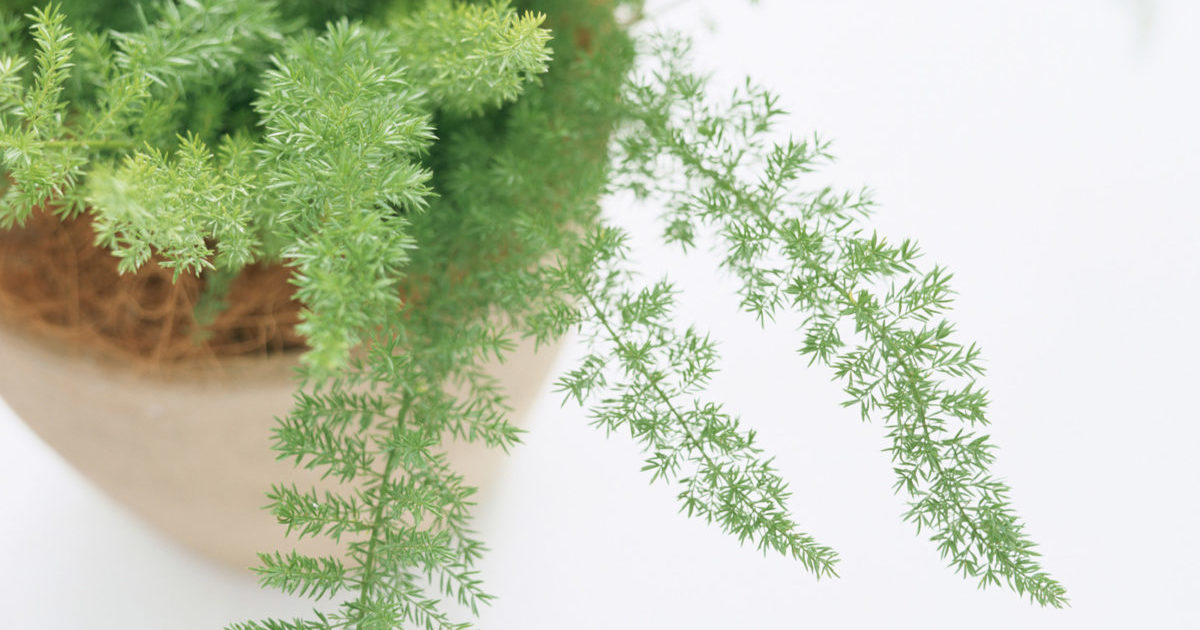 You may be interested in:
You may be interested in:Lighting
The plant should receive a lot of bright diffused light, otherwise its leaves will fade, and the flowering time will be significantly reduced. However, the bush needs protection from direct sunlight, which can damage its leaves with burns.
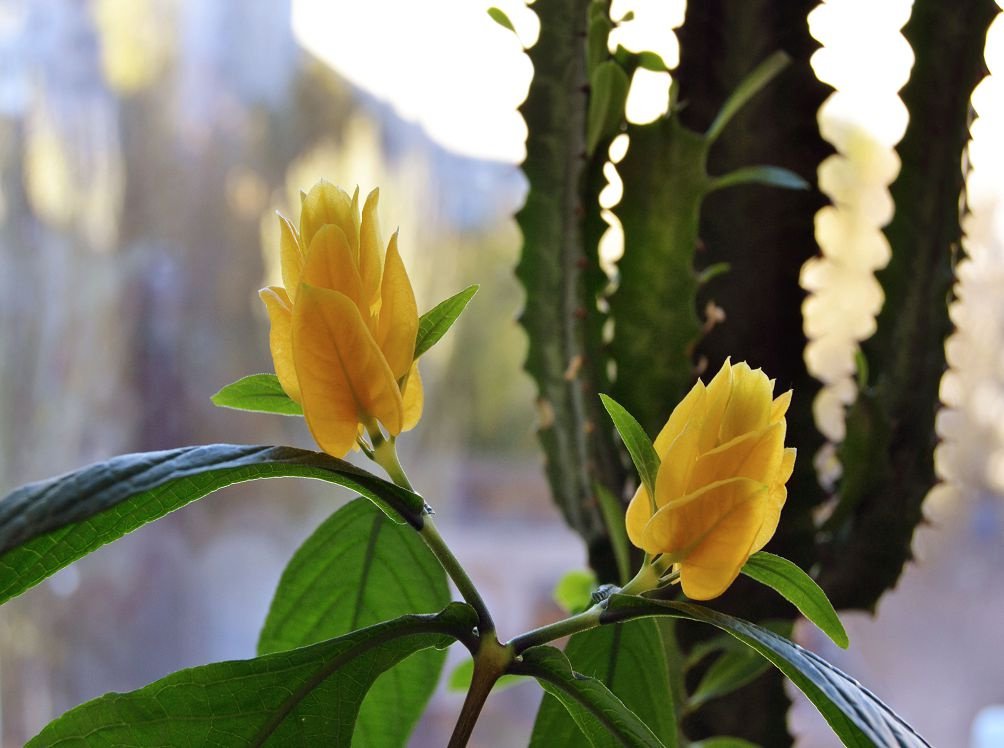
To shade the bush from the midday sun, you can use a thin curtain or gauze. A great place to place the shrub will be the windows of the east or west. With the onset of cold weather, when the duration of daylight hours is significantly reduced, it is recommended that the plant be provided with additional lighting using phytolamps.
Temperature and humidity
The bush reacts equally poorly to both heat and cold. In the summer, the flower is best kept at an air temperature of 20 to 25 ° C. In a hotter room, the plant may lose foliage and stop flowering. In winter, the bush will be comfortable at a temperature of 14 to 18 ° C.
Pachistachis needs high humidity, which can be achieved by regular and frequent spraying of its leaves from the spray gun. You can spray the leaves only with soft, well-settled water at room temperature.
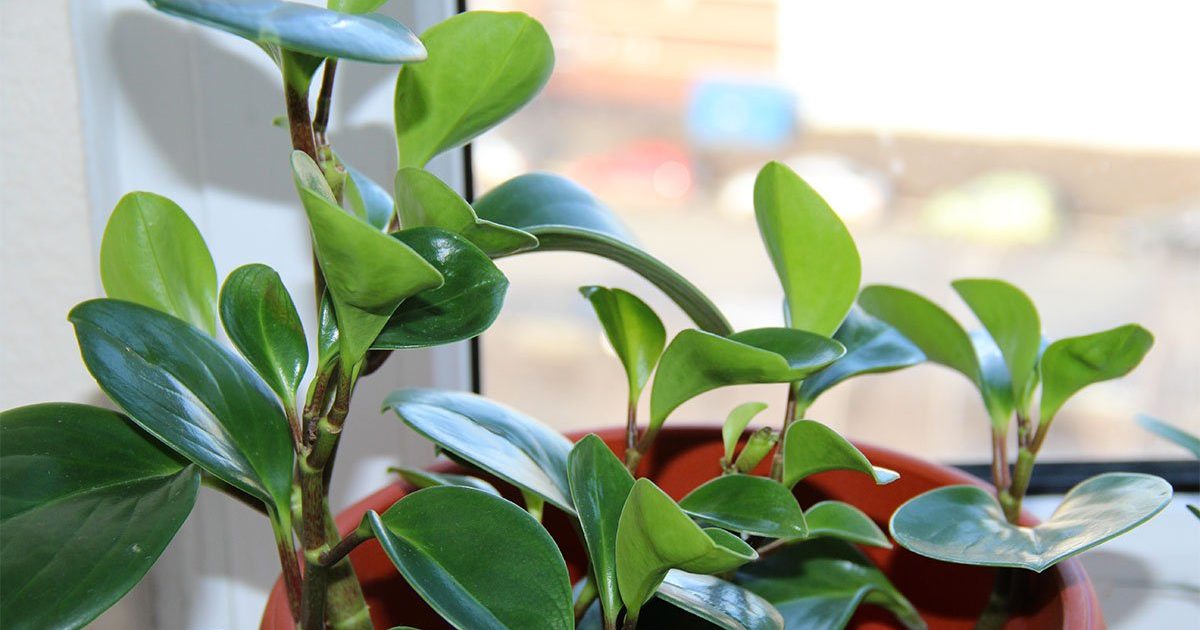 You may be interested in:
You may be interested in:Placing a container with wet expanded clay near a plant can also significantly increase the humidity in the room. A moisture-loving shrub should be placed as far as possible from heating appliances that dry the air quite strongly.
Watering and feeding
The bush must be provided with frequent and plentiful watering with soft water. The temperature of the water should be approximately equal to the temperature of the air in the room in which the flower is contained. In the hot and dry season, the plant needs daily watering.
However, despite the flower’s high need for moisture, it is impossible to prevent fluid stagnation in the pan. In the cold season, 1-2 waterings per week will be enough. The main thing is to always keep the soil moist and prevent it from drying out deeper than 1-2 cm from the surface.
From spring to autumn, the plant needs additional fertilizing once every 2 weeks. As a top dressing, it is best to use complex fertilizers for flowering crops. It is not worth overfeeding the plant, as this can cause the opposite effect, and it simply stops growing or dies.
Flowering Care
Like any flowering crop, this plant needs more careful care during flowering. Blooming pachistachis needs regular and plentiful watering and good lighting. Lack of moisture and light can cause bracts to wilt quickly.
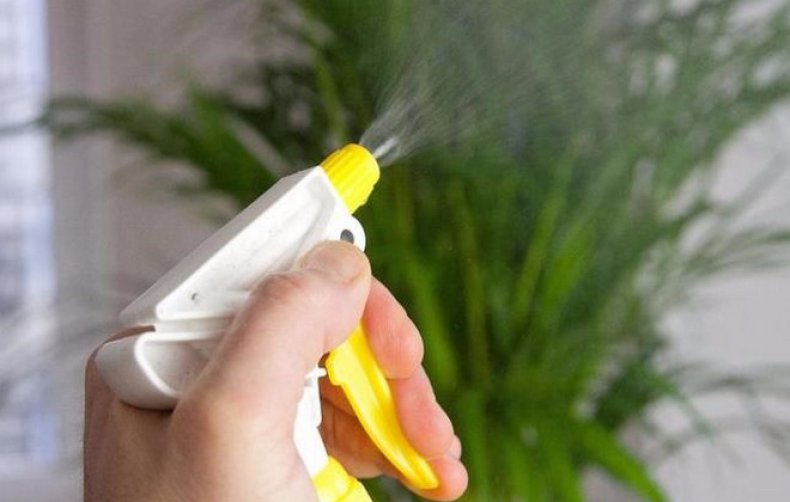
Throughout the flowering period, complex fertilizers must be applied to the soil for flowering ornamental plants. Fertilizing more than once every 14 days is not recommended, as this is fraught with oversaturation and death of the bush.
Pruning and pinching
Young pachistachis has only one shoot, which over time begins to become bare at the base. Such a bush is not decorative and during the flowering process produces only one ear. Only with the help of regular pruning and pinching can you achieve its splendor and the appearance of new spikelets. In the first year, the shrub needs 3-4 pinch tops of shoots. From the second year of life, it is recommended to pinch twice a year - after flowering and after pruning.
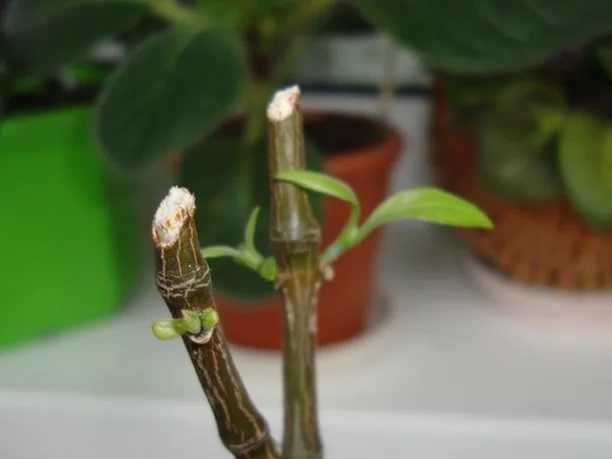
It is necessary to carry out the pruning procedure in early spring, before the start of the period of active vegetation. As a result of the first pruning, a small stump 10-15 cm long should remain. After the appearance of young side shoots, a third pair of leaflets is plucked from them. A similar manipulation is carried out with all the following shoots. So as a result of several nips, you can get a bush with 8 or more tops.
Preparation for winter
Despite the fact that the plant does not have a pronounced dormant period, it is necessary to prepare it for winter. To do this, starting from mid-autumn, it is necessary to gradually reduce the frequency and abundance of irrigation, as well as completely stop the application of fertilizers. After flowering, the shrub does not need additional fertilizing.
At this time of the year, it is also recommended that the flower be provided with additional lighting, as it may not be enough natural light. The content of pachistachis from mid-autumn until the beginning of spring in a slightly cool room, the temperature in which does not drop below 14 ° C, will positively affect its next flowering.
Diseases and pests of the indoor flower
Moody pachistachis painfully responds to some mistakes of the grower in the process of caring for him:
- A lack of moisture in the soil can lead to yellowing and further falling of leaves. Establishing an irrigation system and frequent spraying of a flower can solve the problem. However, it should be borne in mind that after complete exposure the bush is restored for a rather long time.
- The dried edges of the leaves indicate that the plant is contained in a room with a dry microclimate. A container of water nearby and regular spraying will be able to return the bush to decorativeness.
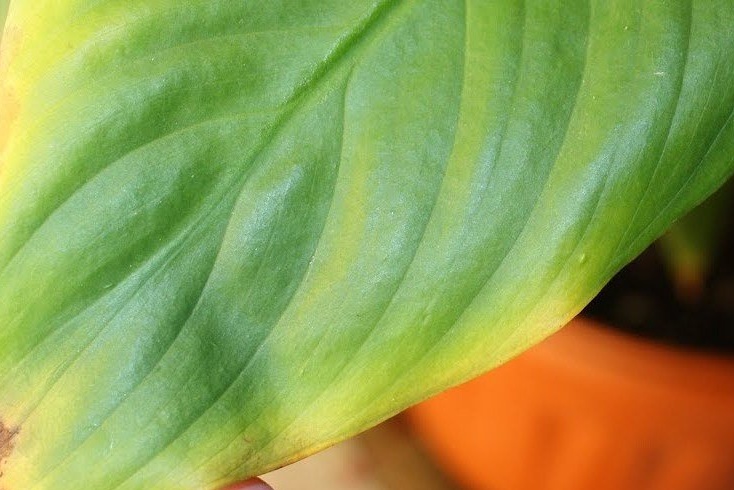
Dried leaf tips - Keeping a flower during a dormant period in a cold room causes foliage to drop. It is enough to increase the air temperature in the room with the bush to 20 ° C to stop the process of exposure.
- Twisted sheet plates are a consequence of a lack of light. Artificial lighting or moving decorative culture to a brighter place will stop the process.
- Slow growth of the bush and lack of flowering indicate that pachistachis lacks nutrients. Regular fertilizer application during the growing season will always help maintain a sufficient amount of nutrients in the soil.
- Excessive watering and sudden changes in temperature can lead to decay of the root system of the flower. You can save the plant only by removing rotten roots and replanting it in new soil.

Root removal - Pachistachis can also be affected by various harmful insects, namely aphids, spider mites, mealybugs, scale insects and whiteflies. These parasites suck out juices from the plant and disrupt its life cycle. Untimely treatment or lack of measures cause the death of the flower. Processing the bush with systemic insecticides will destroy the aphids, worms, scale insects and whiteflies. Against a spider mite, an acaricide or insect acaricide will be an effective remedy.
Reproduction and transplantation of indoor pachistachis
Reproduction of the bush is carried out using apical cuttings with 2-4 nodes. Only freshly cut cuttings from 10 to 15 cm long can be used. Prepared cuttings must be immersed in a container with clean water and covered with a jar or bottle to create greenhouse conditions.
The container with the handle must be kept in a warm room. In addition, the stalk needs daily spraying with warm water and ventilation. Airing time - 30 minutes. After 3 weeks after immersing the cuttings in water, he will let the first roots, after the appearance of which the plant can be planted in small pots.
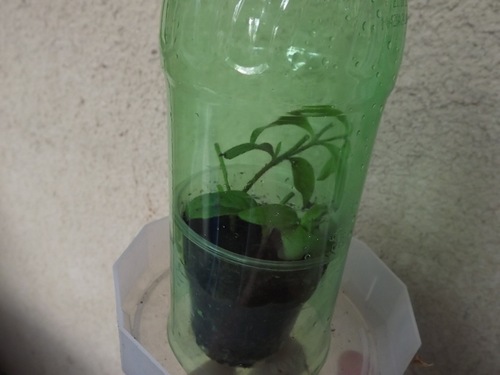
The root system of the flower grows quite quickly, due to which the young pachistachis needs an annual transplant. Mature specimens older than 3 years can be transplanted every 2-3 years. The best time for transplanting is spring, immediately after pruning the bush.
In the process of transplantation, it is recommended to adhere to the following algorithm:
- At the bottom of the new tank, pour a layer of drainage of expanded clay, pebbles or broken shards. The width of the drainage layer should be at least 2 cm.
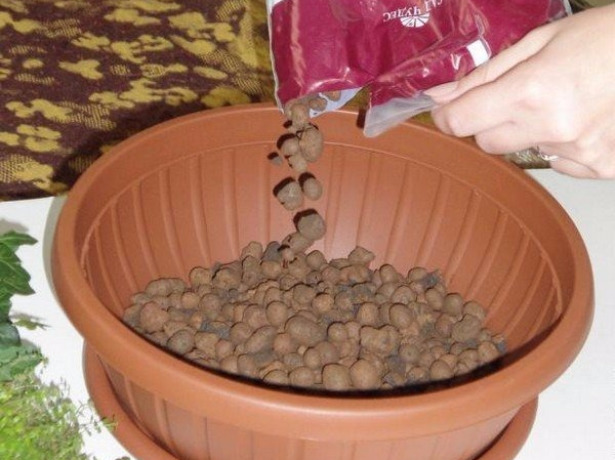
Drainage - Lay a layer of subgrade on top of the drainage. As a soil for planting a bush, you can use a special soil for decorative flowering crops.
- Remove the plant from the old pot and place it in a new one, after examining its root system for damage or rot. If necessary, remove any rotten or broken roots and sprinkle the cut points with charcoal.
- Fill the void of the pot with earth and slightly compact it around the bush.
- Water the plant.
For pachistachis it is better to choose wide shallow pots. If you do not want to use the purchased earthen substrate, the mixture can be prepared independently from taken in equal proportions:
- peat;
- turf;
- sand;
- humus;
- sheet land.
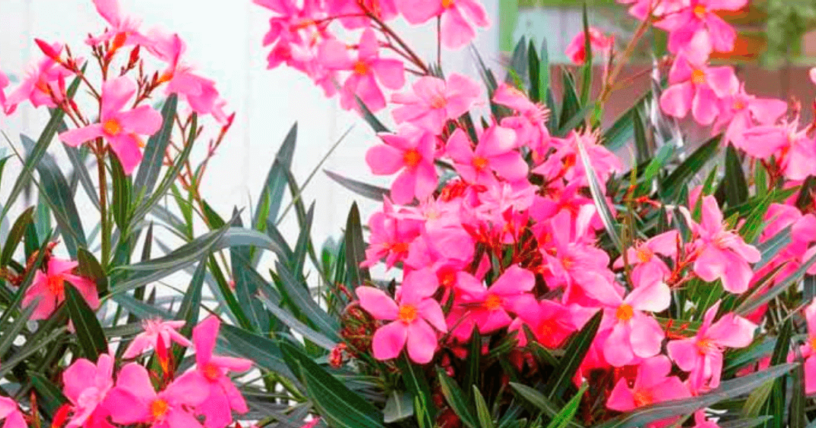 You may be interested in:
You may be interested in:Common Growing Questions
The tropical handsome pachistachis will be able to please only the most attentive florist with its long flowering. Decorative culture does not tolerate neglect, and responds to the creation of the necessary humidity and temperature regime by a healthy look and sunny flowering.

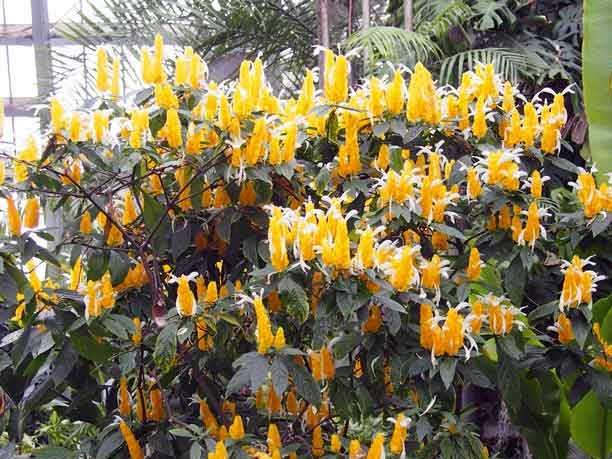
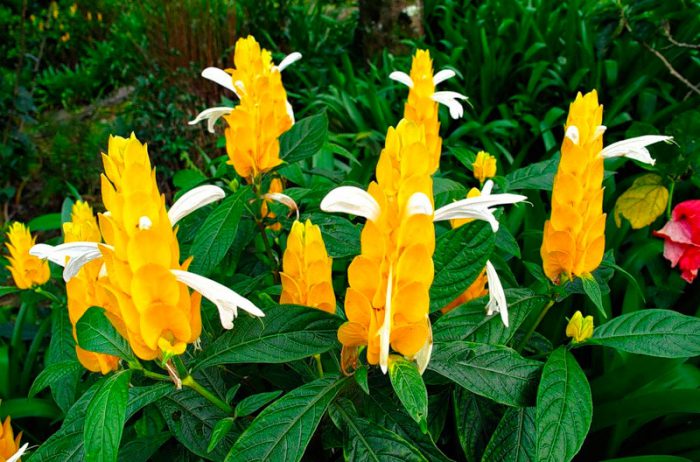




 10 beautiful annuals that bloom all summer
10 beautiful annuals that bloom all summer Sow in the ground, without seedlings: 10 beautiful and unpretentious flowers
Sow in the ground, without seedlings: 10 beautiful and unpretentious flowers Platicodon planting and outdoor care
Platicodon planting and outdoor care Hosta - planting and care in the open ground in the Urals
Hosta - planting and care in the open ground in the Urals